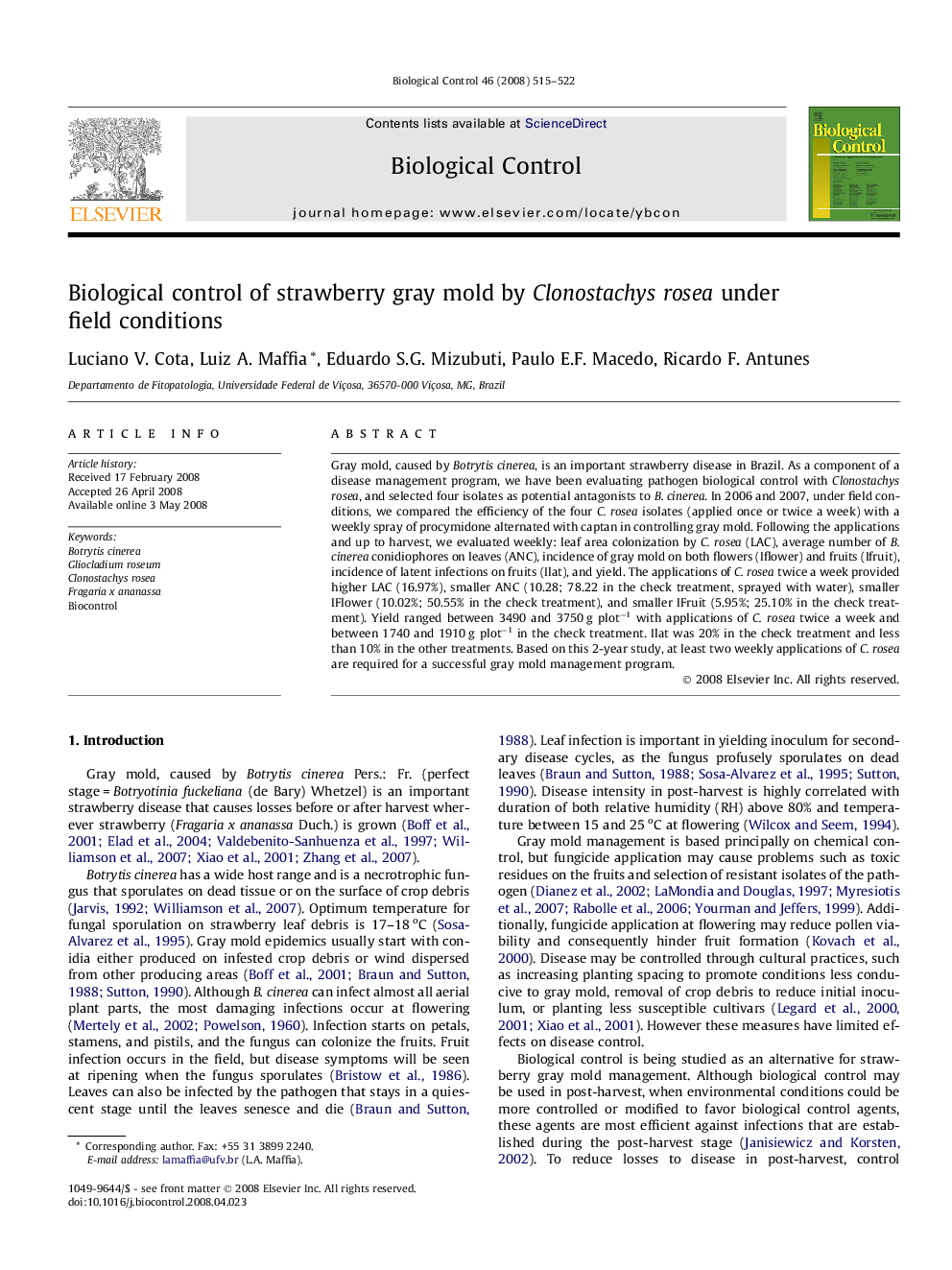| Article ID | Journal | Published Year | Pages | File Type |
|---|---|---|---|---|
| 4504826 | Biological Control | 2008 | 8 Pages |
Gray mold, caused by Botrytis cinerea, is an important strawberry disease in Brazil. As a component of a disease management program, we have been evaluating pathogen biological control with Clonostachys rosea, and selected four isolates as potential antagonists to B. cinerea. In 2006 and 2007, under field conditions, we compared the efficiency of the four C. rosea isolates (applied once or twice a week) with a weekly spray of procymidone alternated with captan in controlling gray mold. Following the applications and up to harvest, we evaluated weekly: leaf area colonization by C. rosea (LAC), average number of B. cinerea conidiophores on leaves (ANC), incidence of gray mold on both flowers (Iflower) and fruits (Ifruit), incidence of latent infections on fruits (Ilat), and yield. The applications of C. rosea twice a week provided higher LAC (16.97%), smaller ANC (10.28; 78.22 in the check treatment, sprayed with water), smaller IFlower (10.02%; 50.55% in the check treatment), and smaller IFruit (5.95%; 25.10% in the check treatment). Yield ranged between 3490 and 3750 g plot−1 with applications of C. rosea twice a week and between 1740 and 1910 g plot−1 in the check treatment. Ilat was 20% in the check treatment and less than 10% in the other treatments. Based on this 2-year study, at least two weekly applications of C. rosea are required for a successful gray mold management program.
